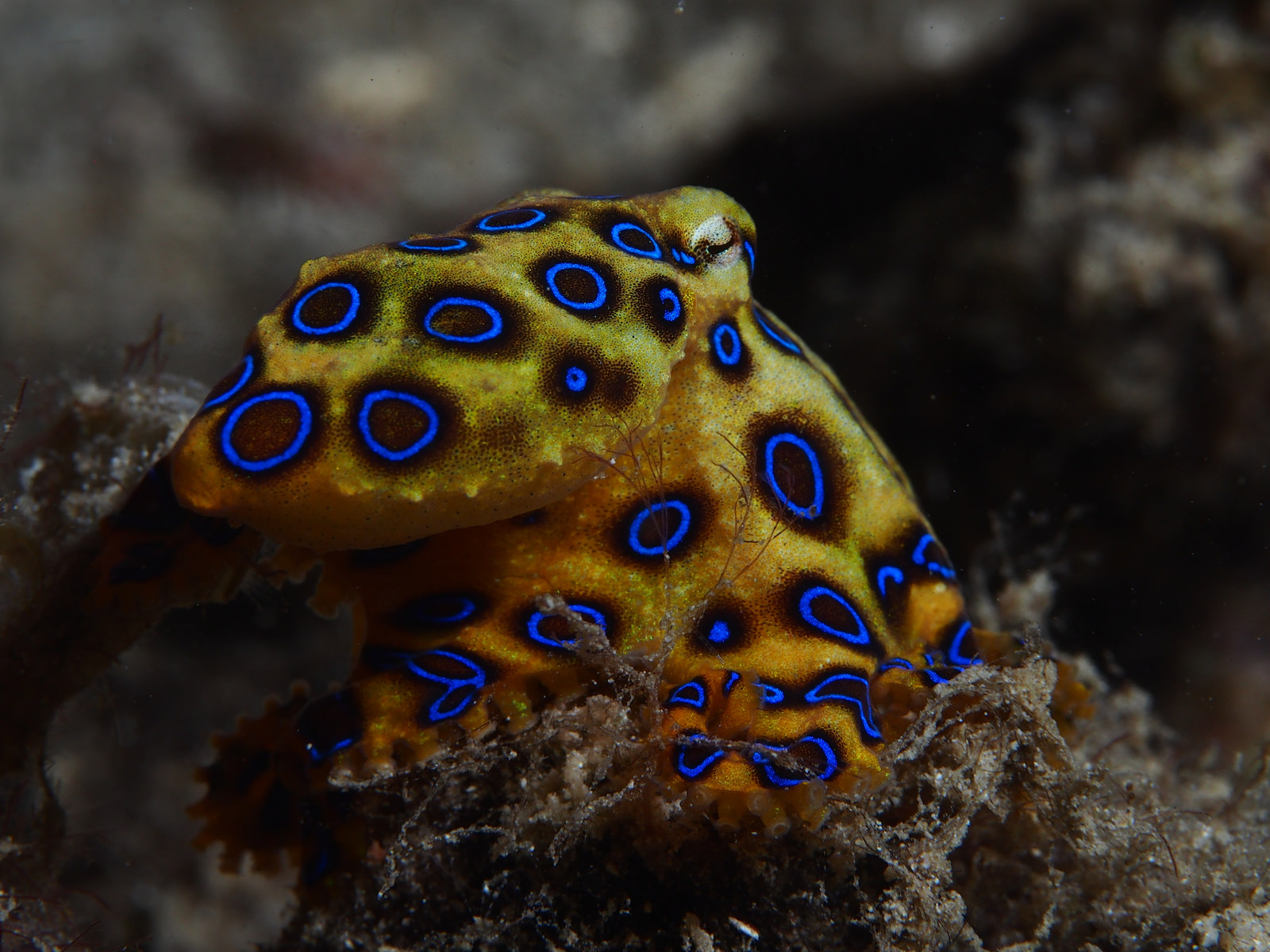 |
| Image: Rickard Zerpe |
Blue-ringed Octopuses are a lot more subtle than any bear, though. Unless it's a bear who sneaks around with a syringe of venom. Or one of those bears who leave poisoned porridge around so that people eat it and fall asleep almost immediately, all so they can enjoy the moral outrage of someone sleeping in their bed.
 |
| Image: Steve Childs Tiny, brutally venomous but not horrifically aggressive! |
This is not the good kind of pretty where you stop and stare. This is the bad kind where you run away.
 |
| Image: Saspotato |
Australia is particularly well-endowed with these venomous pipsqueaks. Dangerous wildlife is, after all, the Australian way.
 |
| Image: Angell Williams Greater Blue-ringed Octopus (H. lunulata). Big rings |
 |
| Image: Saspotato Southern Blue-ringed Octopus (H. maculosa). Little rings |
 |
| Image: Klaus Stiefel Blue-lined Octopus (H. fasciata). Lines |
Finally, the mysterious H. nierstraszi. It was once discovered near India, named, described and never seen again.
 |
| Image: Saspotato |
Blue-Ringed Octopuses spend a lot of their time hidden away in rocky crevices. When they're feeling relaxed and happy with life they're just brown or grey or tan coloured. The blue rings are either very faint or not visible at all.
Video: Chan Juitun
Now they can go out on the prowl. Their favourite food is crustaceans like crab and shrimp. The Blue-ringed Octopus pounces on them, cracks a hole in their shell with a tough, octopus beak and injects venom. Prey is soon paralyzed and the struggle over. With such unpleasantness out of the way, our octopus can feed in a peaceful, civilized manner.
Thing is, that venom is a problem for more than just tiny shrimp. Or indeed big, predatory fish. A single bite from these little cuties is lethal to humans! The bite itself is tiny - sometimes people don't even realise it's happened - but if sufficient venom is injected, the poor victim may suffer paralysis and asphyxiation as their lungs stop working. People can die in under ten minutes if they don't get help fast.
Video: BlueWorldTV
The Blue-ringed Octopus advertises the potency of their bite with the selfsame blue rings. When they're agitated or annoyed, the rings brighten up while the surrounding skin darkens for contrast. Soon there's no ignoring them as the rings glow and even pulsate with a malign-yet-pretty power.
The source of this power (the source of the deadly toxin, that is) is, of all things, bacteria. Yup. I guess by now we've all heard of those bacteria that enable all sorts of creatures to glow in the dark via bioluminescence. Well, turns out there are also a whole bunch of bacteria that provide various animals and plants with horrible poisons and toxins. Yay, bacteria.
 |
| Image: Saspotato Blues subdued |
In the case of the Blue-ringed Octopus, the bacteria are packed into their salivary glands. As if spitting wasn't unhygienic enough already. Imagine if they got a cold!
 |
| Image: Saspotato |
The hatchlings meanwhile drift about in the sea for some time, living the planktonic life. Who knows? Perhaps they're already meeting and greeting some bacterial friends and dribbling deadly saliva all over their podgy chins.

4 comments:
Why does the prettiest octopod have to be the deadliest? :(
i believe i'll just admire from afar. :)
whelp, I'm not going to brazil or australia any time soon
@Esther: At least you won't forget what they look like in a hurry!
@TexWisGirl: Yeah, not like that guy prodding one with his finger!
@Porakiya Draekojin: Oh, it'd be fine! Just bring along a suit of armour and a few spare organs.
Post a Comment